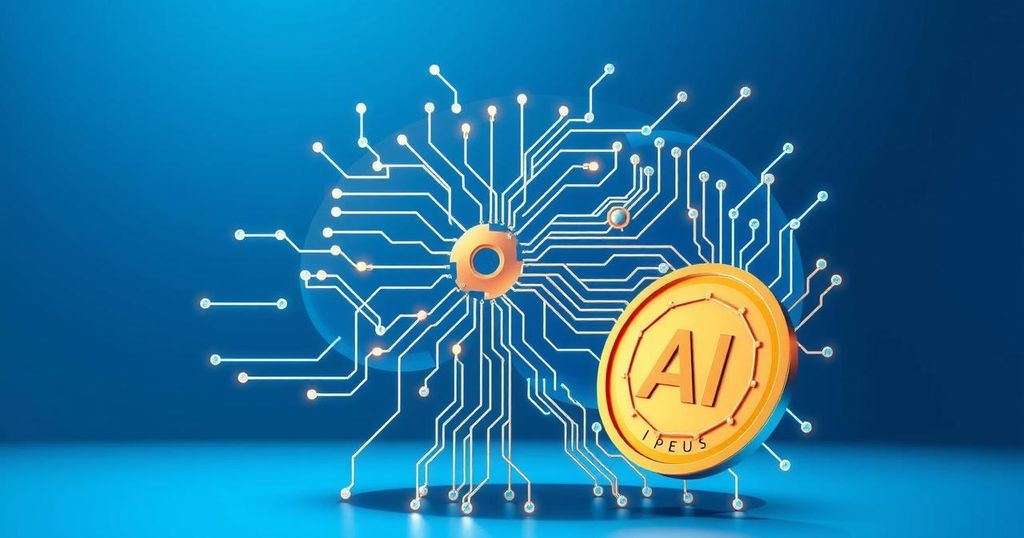Artificial Intelligence and the U.S.-China Rivalry: Lessons for the Future
The U.S. faces a unique rivalry with China in AI, lacking a cohesive strategy to counteract its influence. Current American policies react to China rather than proactively shaping a successful future. By leveraging China’s vulnerabilities and investing in workforce development, the U.S. can spearhead a new industrial revolution focused on human-AI collaboration. Embracing timely innovation will unlock vast opportunities for progress and reinforce America’s global standing.
China’s approach to artificial intelligence (AI) offers valuable insights for American policymakers. The U.S. faces a unique rivalry with China, which equals it in economic scale, technology, and global influence. Unfortunately, without a cohesive strategy to confront this challenge, America risks becoming reactive and defensive, allowing Beijing an advantage in a confrontational geopolitical landscape.
Today’s U.S. foreign strategy leans heavily on external measures like economic sanctions and military threats, but this outdated tactic is ineffective against China. Instead, American policymakers must redefine success beyond merely maintaining global order and focus on crafting innovative strategies that anticipate China’s technological advancements and competition in various sectors.
To compete effectively, the U.S. requires structured research and monitoring of China’s maneuvers and economic risks. Analyzing China’s challenges can help form proactive policies rather than continue with reactive and superficial fixes that ignore root causes. Recognizing this demand is crucial for American success in the global arena.
American companies operating in China often face pressure for intellectual property transfer, embodying the overt and covert influences China exerts. The disparity in law as a tool for competition underscores a critical need for the U.S. to reassess its strategies, moving away from the illusion of unilateral dominance and towards understanding China’s multifaceted approach.
Misjudging China carries significant risks, including warfare and public health crises. Prioritizing engagement and building trust are vital. Furthermore, acknowledging the shift from American exceptionalism is essential for any sustainable strategy. A nuanced understanding of this multipolar world is necessary for effective policymaking.
Recognizing China’s vulnerabilities is equally important. The Communist Party relies on surveillance and oppression, creating socio-economic pressures that could destabilize its power. If the U.S. can exploit these weaknesses while safeguarding technological innovations, it could turn the tide in favor of American interests.
A clear plan involves increased public and private investments in education and workforce development, particularly in areas that do not necessitate a four-year degree, as well as high-risk R&D initiatives. Moreover, embedding advanced manufacturing hubs across America could rejuvenate communities and harness the benefits of human-AI collaboration.
Technology alone won’t ensure dominance. The U.S. must also learn from China’s efficient application of research in practical scenarios. By tapping into the creativity and labor potential of the heartland, the U.S. can create a vibrant workforce utilizing AI to drive industries forward, fostering innovation while minimizing reliance on foreign supply chains.
Such domestic capabilities don’t equate to isolationism; instead, strong U.S. foundations bolster international collaboration and alliances. Productive engagement with China and other countries will be paramount in addressing global issues while ensuring America’s place as a leader in a rules-based order.
Challenges abound, including the risks of new technologies failing or workers being unable to adapt swiftly. Yet, the potential dangers of inaction far outweigh these risks. Embracing innovation to revitalize American manufacturing and research can steer the nation towards a new epoch of prosperity across diverse locations.
A proactive strategy focusing on rebuilding America’s industrial might and harnessing human-AI synergy will be crucial. This goal, while ambitious, aims not only at restraining China’s influence but at establishing the U.S. as a pioneer in the next industrial revolution. It is essential to act now to cultivate this vision for the future.
In summary, the U.S. is at a crossroads in the face of China’s rising influence. By learning from China’s approach to AI, Americans can shape a proactive strategy that reinforces domestic strengths while addressing technological advancements. This vision hinges on fostering human-AI collaboration and investing in workforce development, which, in turn, can provide wide-reaching benefits for the American populace. Taking decisive action is essential for turning the tide of global competitiveness and ensuring lasting prosperity.
Original Source: nationalinterest.org




Post Comment